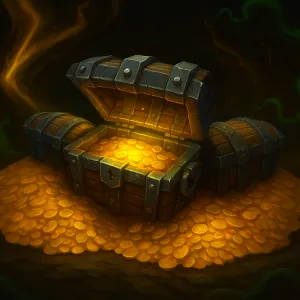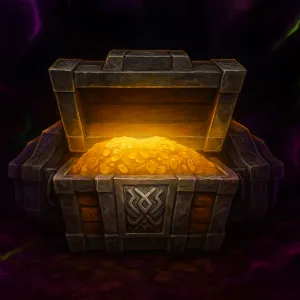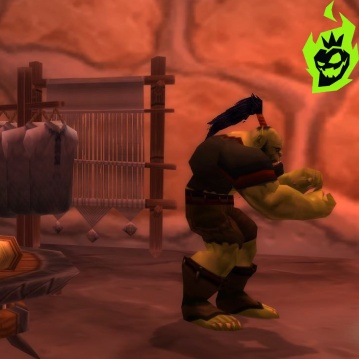WoW Classic Tailoring Guide
I have always enjoyed making gear out of fabric while playing in Azeroth. Tailoring in WoW Classic is one of those professions that requires patience, consistency, and a bit of planning. It’s about turning simple fabrics into items for yourself, for your friends, or to sell on the auction house. My journey with Tailoring has always been a mix of research and experimentation, which helped me understand each step of the profession better.
Below I’ll share my own approach to going from Apprentice Tailor to Artisan Tailor. This guide is meant to be straightforward with enough information to help anyone level Tailoring from 1 to 300. It includes where I trained, what materials I gathered, and what I crafted for max progression. The text is from my perspective but flexible enough to fit any race, faction, or playstyle in World of Warcraft Classic.
Apprentice Tailoring (1–75)
I started my Tailoring journey by training as an Apprentice Tailor in my faction’s capital city. For the Horde, I went to the Tailoring trainer in the Undercity or Orgrimmar. For the Alliance, I went to Stormwind or Ironforge. Apprentice Tailoring is about linen cloth and coarse thread, the two main materials to craft low-level items. These items are simple and give decent skill-ups to 75.
Make sure to check local vendors for coarse thread and save every linen cloth from early mobs. After getting Apprentice Tailoring, I opened my spellbook to look at the initial recipes. The easiest path at the beginning is to turn all that linen cloth into bolts and then craft simple items. I made a balanced amount of Bolt of Linen Cloth first, then switched to items like Heavy Linen Gloves or Reinforced Linen Cape until they no longer granted skill-ups.
Apprentice Tailoring Recipes
| Recipe | Skill Range | Materials Needed (per craft) | Approx. Crafts |
|---|---|---|---|
| Bolt of Linen Cloth | 1 – 50 | 2× Linen Cloth | 50 – 60 |
| Heavy Linen Gloves | 35 – 70 | 2× Bolt of Linen Cloth, 1× Coarse Thread | 20 – 30 |
| Reinforced Linen Cape | 60 – 75 | 3× Bolt of Linen Cloth, 3× Coarse Thread | 15 – 20 |
The table above shows the path I took to get from 1 to around 75.
Apprentice Trainer Locations
| Faction | City / Area | Trainer Name | Skill Level Taught |
|---|---|---|---|
| Horde | Undercity | Dannal Stern (example) | Apprentice |
| Horde | Orgrimmar | Magar (example) | Apprentice |
| Horde | Thunder Bluff | Un’thuwa (example) | Apprentice |
| Alliance | Stormwind City | Georgio Bolero (example) | Apprentice |
| Alliance | Ironforge | Tiana Moon (example) | Apprentice |
| Alliance | Darnassus | Me’lonis (example) | Apprentice |
Whenever I needed more guidance, I would ask a guard for directions to the trainer. This ensured I never wandered around aimlessly, especially in large cities.
Basic Materials and Vendors
| Material | Common Source | Typical Vendor Locations | Estimated Cost |
|---|---|---|---|
| Linen Cloth | Low-level humanoid mobs | N/A (collected from drops) | 0 (farm drop) |
| Coarse Thread | Trade Goods vendors | Tailoring / General Goods merchants | ~10 copper |
| Fine Thread | Trade Goods vendors | Tailoring / General Goods merchants | ~50 copper |
| Red Dye | Dye vendors | Tailoring / Trade Goods merchants | ~25 copper |
Linen Cloth dropped plenty in areas like Elwynn Forest (Alliance) or Tirisfal Glades (Horde) and other low-level zones, so I always tried to stockpile as much as possible. My last step for Apprentice Tailoring was to reach 75, and then I was ready to become a Journeyman.
The Apprentice phase taught me how to collect cloth efficiently and introduced me to vendor resources like thread and dyes. With that done, I moved on to Journeyman and Expert levels, which required visits to bigger cities and new cloth types.
Journeyman and Expert Tailoring (75–200)
For Journeyman Tailoring I focused on wool cloth and silk cloth. This stage took me from 75 to around 125 before I stepped into Expert which goes all the way to 200. To become a Journeyman Tailor you need at least 50 Tailoring skill, but I personally went in once I reached 75 to get the best recipes right away.
In Horde areas, I found Journeyman Tailors in Thunder Bluff, Undercity, and Orgrimmar. Alliance trainers were in Stormwind City, Ironforge, and Darnassus. The main difference between these mid-level ranks was the switch from linen to wool and then to silk recipes. I gathered materials from humanoid mobs in areas suitable for my level range — for example, Redridge Mountains (Alliance) or The Barrens (Horde) for wool cloth. For silk cloth, I ventured into places like Scarlet Monastery or parts of Stranglethorn Vale.
Wool and Silk Cloth Crafting Targets
| Skill Range | Item | Materials (per craft) | Approx. Crafts |
|---|---|---|---|
| 80 – 100 | Bolt of Wool Cloth | 3× Wool Cloth | 30 – 40 |
| 100 – 110 | Simple Kilt | 2× Bolt of Wool Cloth, 1× Fine Thread | 10 – 15 |
| 110 – 125 | Double-stitched Woolen Shoulders | 3× Bolt of Wool Cloth, 2× Fine Thread | 15 – 20 |
| 125 – 145 | Bolt of Silk Cloth | 4× Silk Cloth | 20 – 30 |
| 145 – 160 | Azure Silk Hood | 3× Bolt of Silk Cloth, 2× Fine Thread | 15 – 20 |
| 160 – 170 | Silk Headband | 2× Bolt of Silk Cloth, 2× Fine Thread | 10 – 15 |
Once I started working with silk cloth, I noticed the crafting became a bit more resource intensive. This was the time I decided if I wanted to farm humanoid mobs more often or buy cloth off the AH to speed up progression.
Journeyman/Expert Patterns
| Pattern Name | Source | Materials Needed | Skill Level Requirement |
|---|---|---|---|
| Azure Silk Hood | Trainer – Learned at ~145 | 3× Bolt of Silk Cloth, 2× Fine Thread | 145 |
| Silk Headband | Trainer – Learned at ~160 | 2× Bolt of Silk Cloth, 2× Fine Thread | 160 |
| Formal White Shirt | Trainer – Learned at ~170 | 3× Bolt of Silk Cloth, 1× Fine Thread | 170 |
I often sold extra Azure Silk Hoods or Silk Headbands on the Auction House or disenchanted them for enchanting materials. Keep an eye on the market for cloth prices and re-evaluate whether farming or buying is more efficient at any given time.
Wool and Silk Cloth Drop Zones
| Cloth Type | Typical Mob Level Range | Zones (Alliance) | Zones (Horde) |
|---|---|---|---|
| Wool Cloth | ~15–25 | Westfall, Redridge | The Barrens, Silverpine Forest |
| Silk Cloth | ~28–40 | Duskwood, Stranglethorn | Hillsbrad Foothills, Scarlet Monastery (instance) |
At around skill 125, you transition to Expert Tailoring by talking to trainers in major cities or specialized trainers in Stromgarde (Alliance) or Tarren Mill (Horde). By 200, you’ll be ready for Artisan, which is the final and biggest rank for tailoring mastery.
Artisan Tailoring (200–300)
Artisan Tailoring felt really advanced once I started working with mageweave cloth and runecloth. In WoW Classic, there is only one Master Tailor who teaches Artisan Tailoring for the Horde in Shadowprey Village (Desolace) or for the Alliance in Theramore Isle (Dustwallow Marsh). The requirement was level 35 and 200 Tailoring, so I made sure to meet both before heading out.
The cloth types used in this tier were mageweave and runecloth. This meant venturing into zones with mobs 40–55 for mageweave and 50–60 for runecloth. I found that instances like Zul’Farrak or Blackrock Depths would give me a full stack of cloth by the time I cleared them. Heavy threads (like heavy silk thread) and more dyes also came into play at this stage.
| Skill Range | Item Name | Materials (per craft) | Approx. Crafts |
|---|---|---|---|
| 200–215 | Bolt of Mageweave | 5× Mageweave Cloth | 15 – 20 |
| 215–230 | Black Mageweave Gloves | 2× Bolt of Mageweave, 2× Heavy Silk Thread | 15 – 20 |
| 230–250 | Black Mageweave Headband | 3× Bolt of Mageweave, 2× Heavy Silk Thread | 20 – 25 |
| 250–260 | Bolt of Runecloth | 5× Runecloth | 10 – 15 |
| 255–275 | Runecloth Belt | 3× Bolt of Runecloth, 1× Rune Thread | 20 – 25 |
| 275–295 | Runecloth Gloves | 4× Bolt of Runecloth, 1× Rune Thread | 20 – 25 |
| 295–300 | Runecloth Bags / Other Alternatives | Varies by pattern | 5 – 10 |
I turned every stack of runecloth into bolts then combined them with rune thread. Belts and gloves were the best skill-up path for me, but some players prefer other items if they find more profitable patterns on AH or from vendor recipes.
Common Mageweave and Runecloth Drops
| Cloth Type | Mob Level Range | Zones / Instances |
|---|---|---|
| Mageweave | ~40–50 | Zul’Farrak, The Hinterlands, Tanaris |
| Runecloth | ~50–60 | Blackrock Depths, Western Plaguelands, Stratholme |
By the time I finished Artisan Tailoring at skill 300, I could craft top-end cloth gear and popular bag recipes. Runecloth Bags (14-slot) often sold well on the Auction House. Finishing this final stretch can be resource-intensive, but the payoff is worth it for the improved gear, bags, and gold-making potential.
WoW Classic Tailoring Tips
I want to share extra tips that helped me manage materials and skill-ups throughout every stage of Tailoring. These small insights can save time and gold in the long run:
- Use Bank Slots Wisely: Storing cloth in your bank frees up bag space.
- Watch for Green Recipes: Even if a recipe turns green, it can still grant skill-ups for a bit.
- Check the Auction House: Sometimes buying extra cloth or patterns is more efficient than farming.
- Disenchant Items: If you have Enchanting, convert surplus crafted gear into enchanting materials for profit.
- Buy Threads in Bulk: Stock up on thread and dyes so you never have to make extra vendor trips mid-session.
Working with so many types of cloth made me more conscious of where to farm. Traveling around Azeroth can be time-consuming, so synergy between questing zones and cloth drops is valuable. Tailoring in WoW Classic is a methodical progression, but each step brings new opportunities to craft interesting gear, better bags, and stylish cosmetic pieces. 1-300 is a journey of discovery, trading, self-improvement, and a little bit of gold on the side.
Good luck on your Tailoring adventure in Azeroth! I hope these steps help make your cloth-crafting journey smoother and more profitable.








